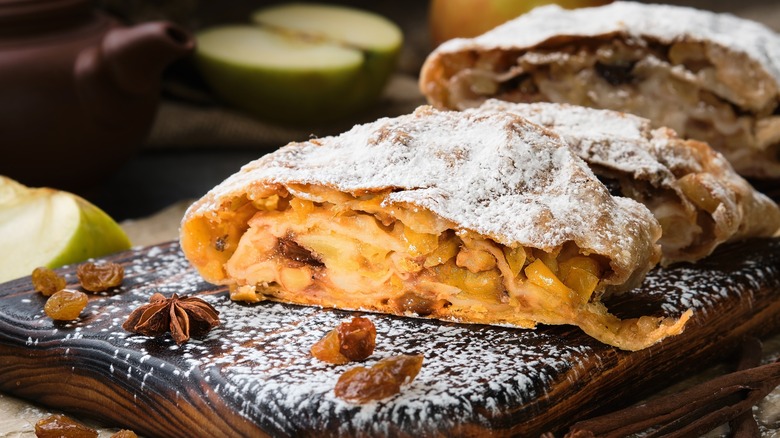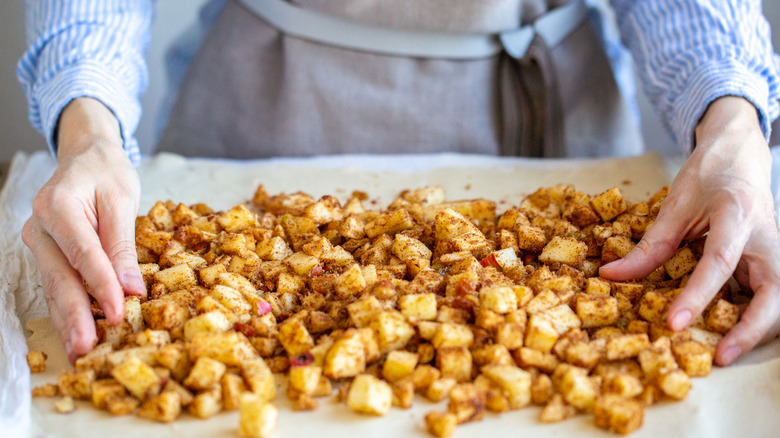How Breadcrumbs Can Improve Your Apple Strudel
Austrians are no slouches when it comes to dessert-making, with the country's sweets canon populated by some of the most decadent and intricate cakes and pastries out there. Like buttery jam-filled Linzer cookies, dense chocolate ganache-draped Sachertorte, and round apricot jam-stuffed doughnuts. All these treats originated in Austria, according to Insanely Good Recipes, and some speculate that even French croissants were an idea imported from Vienna (via Smithsonian). One more you can add to the list? Apple strudel.
The classic, comforting dish of sweet, warm apples wrapped up in flaky layers of pastry and snowed in under powdered sugar traces its origins to 17th-century Vienna, per Culture Trip. Likely the result of cross-cultural pollination with Turkish desserts such as baklava, the first strudel was apparently filled with a milk custard. Today, however, among variations such as cherry, poppy seed, and cheese, the apple version clearly stands out.
While making apple strudel at home can be a time-consuming affair, the delicious, heaven-scented result is well worth it. And in addition to your apples, spices, and pastry, you're going to want to grab some breadcrumbs when you get to work on this imperial legend.
Bread crumbs rolled into the filling soak up any excess juices from the apples
If you're a passionate baker who's made apple strudel from scratch — meaning you craft the unleavened, flour-and-oil dough and then painstakingly roll it out by hand — our hats off to you. Even when baking with prepared puff pastry, homemade strudel is a labor of love, and it's one that can produce disappointing results, in some cases, when despite all that effort, your apple strudel turns out soggy instead of crisp.
Why would that happen? According to Serious Eats, it's a common issue that occurs when the apples baking inside the layers of dough release lots of juices, which have nowhere to go and instead soak into the pastry, leaving it juice-logged instead of crunchy and flaky. That's why, according to the outlet, many traditional recipes for apple strudel will have you sprinkle a layer of breadcrumbs out onto the thin, stretched dough that will then receive the sliced apples and get all rolled up.
As the stuffed pastry bakes and the apples let off their liquid, that moisture will get soaked up by the bread, protecting the layers of pastry and ensuring they turn out nice and crisp. In its recipe, the outlet uses toasted crumbs, whose crunch factor is extra-resistant to moisture.

